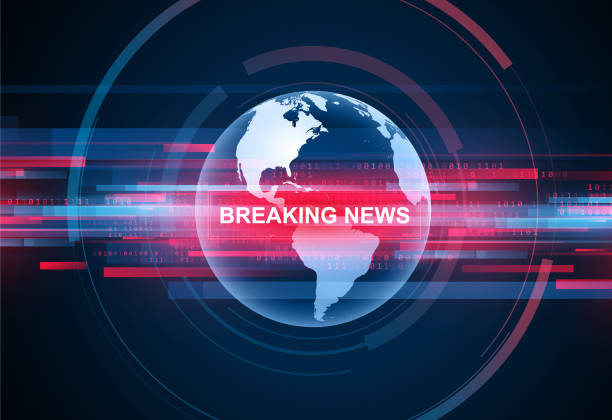WASHINGTON D.C. , The United States Secret Service has quietly suspended multiple members of its protective detail following a previously unreported assassination attempt targeting former President Donald Trump, sources within the agency have confirmed. The incident, which occurred in late February during a campaign rally in Nevada, involved a lone individual who managed to breach security perimeters while visibly armed.
While the Secret Service maintains that the suspect was apprehended before posing an immediate threat to the former president, internal investigations revealed a series of critical failures in protocol and execution. These lapses prompted swift disciplinary action, including suspensions without pay for several agents directly involved in the security detail. The agency has been tight-lipped about the specifics of the event, citing ongoing investigations and concerns about compromising future security operations. An official statement released late yesterday evening acknowledged “personnel matters” but declined to elaborate further.
“The Secret Service holds its personnel to the highest standards of conduct,” the statement read. “Any deviation from established protocols is taken seriously and addressed appropriately. We remain committed to ensuring the safety and security of those entrusted to our protection.”
The attempted attack challenges the assumption that former presidents are uniformly secured, even at public events. Traditionally, security measures are incredibly tight, creating almost impenetrable bubbles. However, evidence suggests that vulnerabilities existed during the Nevada rally. Eyewitness accounts describe confusion and delayed reactions from security personnel as the suspect approached the stage.
Local residents near the site spoke of unease in the aftermath of the events that played out. “Nobody saw it coming,” said Maria Sanchez, who owns a flower shop across the street from the rally venue. “It was all so sudden. One moment everything was normal, and the next, there were sirens and flashing lights everywhere. It was a real shock to the system.”
The incident has reignited debate about the level of protection afforded to former presidents, particularly in the current climate of heightened political polarization. Some experts argue that the current framework, which relies heavily on static security measures and reactive responses, is no longer sufficient to address the evolving threats faced by prominent political figures.
“The nature of threats has changed,” said Dr. Emily Carter, a professor of political science at George Washington University and someone who has been studying political rhetoric for over 20 years. “We’re seeing a rise in lone-wolf actors motivated by extremist ideologies and conspiracy theories. Protecting individuals in this environment requires a more proactive and intelligence-driven approach.”
This incident also casts a shadow over the Secret Service’s capacity to maintain order. The Secret Service has faced a number of scandals in recent years, raising questions about its internal culture and operational effectiveness. Some critics have pointed to a pattern of recklessness and ethical misconduct within the agency, calling for greater oversight and accountability.
The suspensions come at a time when the Secret Service is already facing significant challenges, including budget constraints, staffing shortages, and an increase in the number of protectees. The agency is tasked with protecting not only the President and Vice President, but also their families, former presidents and vice presidents, and other designated individuals. This expansive mandate stretches the agency’s resources thin, making it difficult to maintain the highest level of security at all times.
What appears to have exacerbated the issue were delays in communication. Initial reports indicate that there was a significant delay in relaying real-time threat information. It’s important to highlight that these communication lapses have raised concerns about the effectiveness of the Secret Service’s command-and-control structure, and the safety risks that may arise.
Here’s a summary of the key failings that led to the suspensions:
- Breach of security perimeters during the rally.
- Delayed reaction by security personnel.
- Lapses in communication regarding real-time threat information.
- Failure to properly vet and screen attendees.
The new framework, according to security experts, should emphasize better intelligence gathering, proactive threat assessment, and enhanced coordination with local law enforcement. This includes utilizing advanced technologies, such as artificial intelligence and facial recognition, to identify potential threats before they materialize. Furthermore, experts agree that the Secret Service needs to strengthen its internal training programs and promote a culture of accountability to prevent future lapses in security.
The Nevada incident serves as a stark reminder of the ever-present dangers faced by political leaders in the United States. It underscores the need for constant vigilance and a willingness to adapt security protocols to meet the evolving threat landscape. The Secret Service’s response to this incident will be closely watched in the weeks and months ahead, as the agency seeks to restore public trust and ensure the safety of those under its protection. This includes improving their security posture for future protection details.
Meanwhile, on X.com (formerly Twitter), debates rage. Users are sharing their reactions, using hashtags like #SecretServiceFail and #TrumpSecurity. On Facebook and Instagram, groups are organizing debates and discussions about the safety of political rallies and candidates.
Details continue to emerge about the man who tried to get to the president. His social media profiles reveal disturbing insights into his frame of mind, which investigators are still examining.



